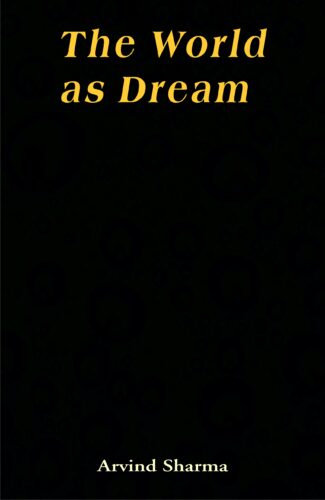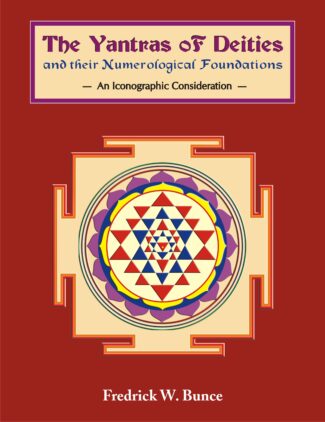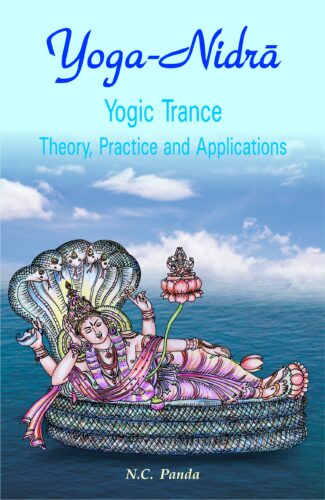Showing 371–380 of 384 results

The book is a biography of the eminent saint-philosopher of modern India, Guru Narayana. It deals with the meaning and essence of guruhood and gives rational explanations for many baffling aspects of life. It reveals the significance of his Advaita Vedanta method for introducing a new science of wisdom dialectics. It also describes the physical and psychological conditions of South India and explores the spirituality of India.
Millions of people have been deeply affected by the life and teachings of the Guru Narayana, who is the central figure of this book. This is a biography, not only of the Guru Narayana, but of Guruhood itself. Religions and philosophies have their sources in such men, and the aim here is to clarify this fact, without being sentimental or sensational. In doing so, many hitherto baffling enigmas of Indian life are given a rational explanation for the first time. Nataraja Guru, the disciple-successor of the Narayana Guru, uses the contemplative discipline which was characteristic of the Guru Narayana, and brings the Advaita Vedanta method into the forefront of global thought as understood today, introducing a new science of Wisdom-Dialectics. Nataraja Gurus scheme of correlation between science and mysticism amounts to an epochal advance in philosophy. This book represents the voice of the Guru. The Word of the Guru provides a quantity of original material for study, including fully annotated and carefully translated writings of Guru Narayana. It describes the physical and psychological conditions of South India with great brilliance. The spirituality of India is set forth here in its clearest terms, unambiguous and shorn of all limiting frontiers, suitable for readers in all parts of the world.

The book is a biography of the eminent saint-philosopher of modern India, Guru Narayana. It deals with the meaning and essence of guruhood and gives rational explanations for many baffling aspects of life. It reveals the significance of his Advaita Vedanta method for introducing a new science of wisdom dialectics. It also describes the physical and psychological conditions of South India and explores the spirituality of India.
Millions of people have been deeply affected by the life and teachings of the Guru Narayana, who is the central figure of this book. This is a biography, not only of the Guru Narayana, but of Guruhood itself. Religions and philosophies have their sources in such men, and the aim here is to clarify this fact, without being sentimental or sensational. In doing so, many hitherto baffling enigmas of Indian life are given a rational explanation for the first time. Nataraja Guru, the disciple-successor of the Narayana Guru, uses the contemplative discipline which was characteristic of the Guru Narayana, and brings the Advaita Vedanta method into the forefront of global thought as understood today, introducing a new science of Wisdom-Dialectics. Nataraja Gurus scheme of correlation between science and mysticism amounts to an epochal advance in philosophy. This book represents the voice of the Guru. The Word of the Guru provides a quantity of original material for study, including fully annotated and carefully translated writings of Guru Narayana. It describes the physical and psychological conditions of South India with great brilliance. The spirituality of India is set forth here in its clearest terms, unambiguous and shorn of all limiting frontiers, suitable for readers in all parts of the world.

There is no shortcut to success other than hard-work. The 100 enlightening quotes on Work in this book are a cornucopia of wisdom that drives off laziness and vitalizes one to run towards his target. Each quote finds its reflection in a stimulating painting of Lord Ganesha, the Lord of Peace, Prosperity and Wisdom.
Work is worship. The authors highlight through this book Work the significance of hard-work and underline its importance to achieve success in life. There is no shortcut to success other than hard-work. To elucidate this concept, the authors have presented 100 carefully chosen quotes on Work. Each quote is accompanied by a stimulating painting of Lord Ganesha, the Lord of Peace, Prosperity and Wisdom. Some of these thought-provoking and ever-inspiring quotes are from highly acclaimed personalities, who have significantly contributed to the well-being of the universe. Hard-work brings forth greater chances of success in one’s life.
God helps those who help themselves and lazy hands make for poverty, but diligent hands bring wealth are some of the adages that propagate the vitality of hard-work.There is no alternative to hard-work. Whatever man has achieved so far is the result of his relentless effort and hard-work. It ultimately brings welfare to the mankind.

Book exploring the names nuances of the theme of World as Dream in all its richness to establish the plausibility of the philosophers position that though the world appears to be real might turn out to be false like a dream.
The ontological status of the world has been a subject of much philosophical speculation despite the fact that the world is an existential given. According to some philosophers, such existential givenness could turn out to be comparable to the earth’s apparent flatness, with the actual truth turning out to be the very opposite of what it seems. Philosophers often cite the experience of a dream to establish the plausibility of their position that the world might appear to be real while it is being experienced, and yet turn out to be ultimately false like a dream. This motif plays a particularly important role in schools of philosophy in the East and the West which are idealistic in their orientation.
This book explores the nuances of the theme of the world as dream in all its richness.

Book exploring one of Advaita Vedantas central illustrative themes with which it tries to render its doctrines credible in the face of our experience of plurality and variety in life.
There is something profoundly counter-intuitive about Advaita Vedanta. Nothing is more obvious to both the philosophical as well as the non-philosophical observer than the fact that multiplicity constitutes the basic datum of our experience. Variety is not only the spice of life it is a cardinal fact of life. The doctrines of Advaita Vedanta shock us by flying in the face of this fact and by denying any ultimacy to that plurality and variety which we experience so intimately. This naturally raises the question: how does Adavita Vedanta render its doctrines credible in the face their apparent implausibility. This book is an exploration of one of its central illustrative devices with which it tries to accomplish this daunting task.

The image of Yama, the god of death in Hindu mythology, has come to have many variants. Dr. Merhs study tries to capture these against their essential literary settings to explore all possible traits of Yamas personality.
In the Hindu pantheon, Yama holds a unique place. A counterpart, in the indigenous tradition, of Avestan Yima, Egyptian Osiris or Greek Pluto, he inspires terror in the heart of an average mortal : not only owing to his overlordship of the abode of the dead, but also for his identification with death itself. Yamas image in Hindu mythology, however, has come to have full many variants which Dr. Merhs study tries to capture against their essential literary settings. Based on the prodigious mass of Indias old-world scriptural literature the Vedas, Samhitas, Brahmanas, Aranyakas and Upanishads, besides the puranic texts, the book meticulously explores all possible traits of Yamas personality, highlighting how the mythical view of this glorious, other-world god passes through a striking change over the millennia between the Rigveda and the later Puranas. Unfolding the deitys Vedic and Puranic descriptions respectively in part 1 and part 2 of the book, the author focusses specially on Yama, the creator, preacher, the philosopher, the law-giver, the punisher and above all, on his role as an eschatologist. Invaluable to the scholars of Indology, Hindu mythology and comparative religion.

The book, highlights the essential import of the innocuous-looking, yet enigmatic, diagrams called Yantras surfacing from the occult practices of the tantrics. It examines a range of tantric yantras, with their varieties, applications, modes of construction and above all their iconographic features.
Hinduism is known for the bewildering profusion of its deities, who are represented not only in two or three dimensional anthropomorphic images, but also in abstract configurations, known as yantras. In yantras is, thus, seen almost a parallel with the surfeit of deities in Hindu tradition. Literally meaning an instrument, apparatus or a talisman, yantra is a kind of mystical diagram used, in tantra, for both meditation and invoking a divinity, and is believed to possess/arouse occult powers. Drawn only by the adept: the ones schooled in this arcane, highly intricate process, and energized by siddh mantras, these seemingly innocuous geometrical figures are employed for any number of reasons or desires: whether to attain wealth, ward off disease, beget a son, vanquish enemies, or even to cause somebodys death. This book, the latest from Professor Bunce, highlights the essential import of these innocuous-looking, yet enigmatic, diagrams surfacing from the occult Practices of the tantrics. The author, an internationally known scholar of Oriental Art, examines a range of tantric yantras, with their varieties, applications, modes of construction and, above all, their iconographic features. Also inter- woven in his text are lucid descriptions of all else associated with a yantra, notably, its deity, its specific purpose, its predominant and secondary numbers and its mantra. Carrying beautiful visual representations of over a hundred yantras, Professor Bunces study holds out enduring appeal to the readers concerned not only with the iconography of tantric yantras, but their mystifying under-pinnings as well.

Dr. N. C. Panda examines yoga-nidra as a scientific discipline the theory, its psychological basis, its techniques and applications to reveal its significance as a means of strengthening the bodys immune system and preventing and curing diseases and regulating ones life patterns. It involves comparative analyses like that of yogic trance and hypnotic trance and yoga-vedanta and Freudian psychologies.
Healing of body and mind through yoga is gaining immense significance at present as a world-wide science of therapy. In this context, yoga-nidra, a self-therapy technique of yoga and tantra, is important as an effective means of regulating the mind. In this volume, Dr. Panda, a noted philosopher and psychologist, yogi and tantrist, delves into the principles and practices of yoga-nidra based on materials from the tantras and Patanjali Yoga in an attempt to explain its benefits with special reference to modern medicine. The book presents yoga-nidra as a scientific discipline that is a potent means to strengthen the bodys immune system and thus to prevent and cure diseases and to regulate ones life patterns. It examines in detail the theory of yoga-nidra, going into the Indian concept of mind and personality. It establishes the psychological basis of yoga-nidra by comparing hypnotic trance and yogic trance and Freudian and Yoga-Vedanta psychologies. It then lucidly presents the techniques of yoga-nidra and deals with the applications of yoga-nidra with relation to curing of psychosomatic and other diseases of common occurrence and to solving current problems such as drug-addiction and stress-induced maladies. This well-conceived and thorough research work will prove useful to scholars of ancient Indian medical science and psychology, particularly those concerned with study of yoga vis-a-vis modern medical problems and systems. It will be of equal importance for the general readers owing to its interesting subject matter, simple style of presentation and easy adoption by the non-adepts.

Dr. N. C. Panda examines yoga-nidra as a scientific discipline the theory, its psychological basis, its techniques and applications to reveal its significance as a means of strengthening the bodys immune system and preventing and curing diseases and regulating ones life patterns. It involves comparative analyses like that of yogic trance and hypnotic trance and yoga-vedanta and Freudian psychologies.
Healing of body and mind through yoga is gaining immense significance at present as a world-wide science of therapy. In this context, yoga-nidra, a self-therapy technique of yoga and tantra, is important as an effective means of regulating the mind. In this volume, Dr. Panda, a noted philosopher and psychologist, yogi and tantrist, delves into the principles and practices of yoga-nidra based on materials from the tantras and Patanjali Yoga in an attempt to explain its benefits with special reference to modern medicine. The book presents yoga-nidra as a scientific discipline that is a potent means to strengthen the bodys immune system and thus to prevent and cure diseases and to regulate ones life patterns. It examines in detail the theory of yoga-nidra, going into the Indian concept of mind and personality. It establishes the psychological basis of yoga-nidra by comparing hypnotic trance and yogic trance and Freudian and Yoga-Vedanta psychologies. It then lucidly presents the techniques of yoga-nidra and deals with the applications of yoga-nidra with relation to curing of psychosomatic and other diseases of common occurrence and to solving current problems such as drug-addiction and stress-induced maladies. This well-conceived and thorough research work will prove useful to scholars of ancient Indian medical science and psychology, particularly those concerned with study of yoga vis-a-vis modern medical problems and systems. It will be of equal importance for the general readers owing to its interesting subject matter, simple style of presentation and easy adoption by the non-adepts.

The sound practice of yoga enables one to have a disease-free body and keen intellect. This book details the impact of various yoga practices on psychology and specifies that consciousness has a wider conation in yoga in developing one’s personality traits and leveraging them further to keep him/her happy and experience a blissful life.
Yoga psychology is both a positive and a normative science. It not only analyses human personality and its growth, but sets normative ideals and prescribes techniques to achieve such objectives, as well. Thus, expansion of consciousness and making oneself the master of his/her mind are the broad objectives of yoga psychology. The topological aspect of mind as described by Freud in terms of conscious, subconscious and unconscious levels was well detailed in the yogic literature, thousands of years ago. The sound practice of yoga enables one to have a disease-free body and keen intellect.
The book, thus, details the impact of various yoga practices on psychology and specifies that consciousness has a wider conation in yoga. Yoga presents vivid and sound meditation procedures for the attainment of psychic consciousness through the awakening of kundalini. Homeostasis or balance is the central principle in yoga psychology, and it holds that any sort of imbalance in the system physical, psychological or pranic creates disorders and the solution lies in rebalancing it. Here comes the role of yogic psychotherapies such as prarthana, mantra sadhana, spiritual couselling, pranayama, yajna, sankirtana, svadhyaya and vrata anushthana.
This volume enunciates that yoga psychology is an applied science, and thus has remedies for many individual and social problems. It deals at large with the application and benefits of yogic practices in developing ones personality traits and leveraging them further to keep him/her happy and experience a blissful life.
| There are no products |